16 Animals That Live in Australia
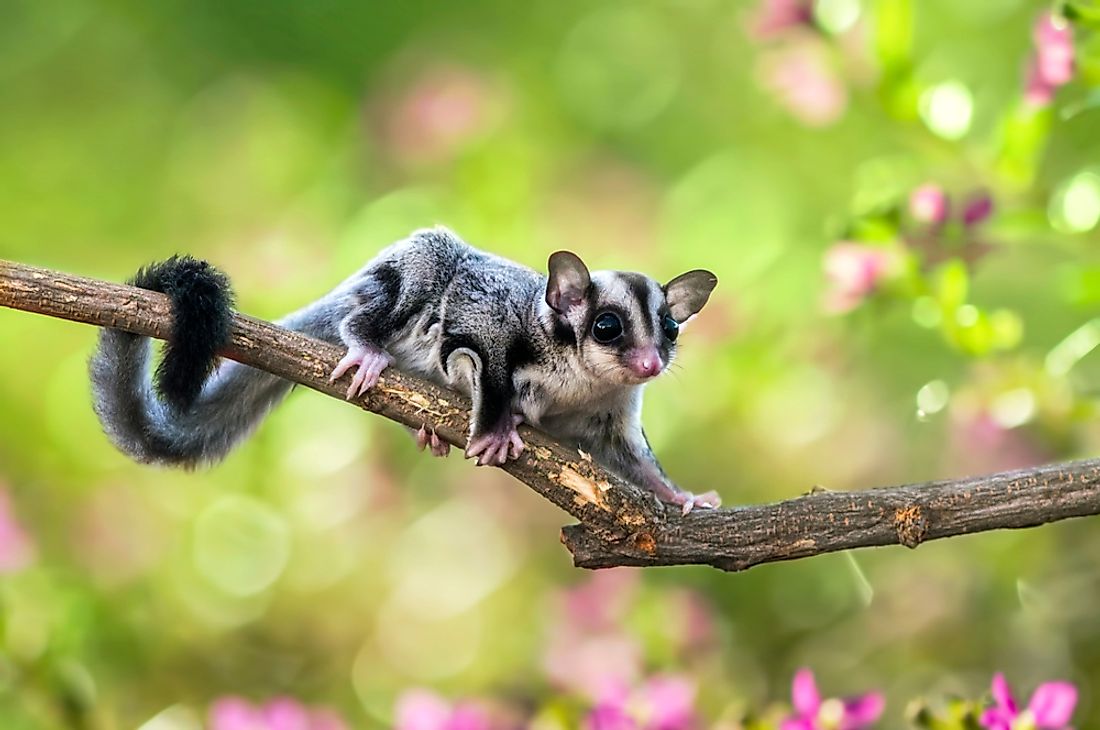
Due to its unique climatic and geological conditions, Australia is known for its distinctive creatures. Although kangaroos, spiders and poisonous snakes are common animals that come to mind when thinking about Australian wildlife, there are many other animals that are native to the country. Here are 16 amazing animals that can be found in Australia.
16. Box jellyfish
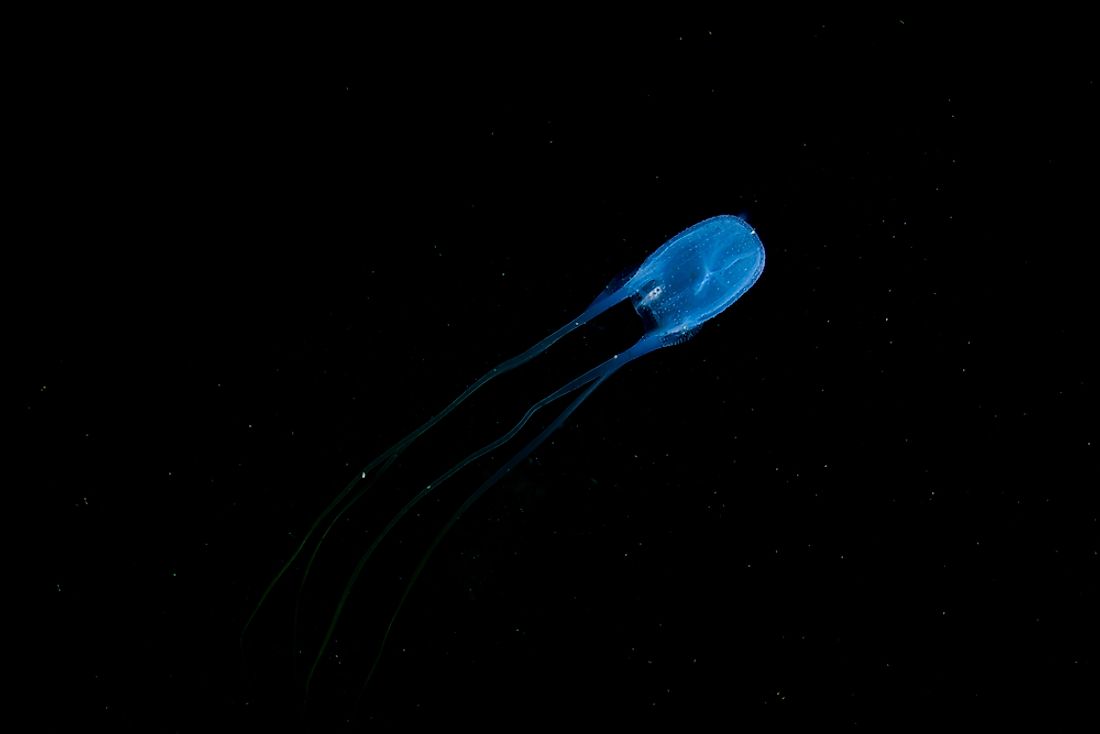
Box jellyfish are commonly identified by their cubed-shaped medusa. There are 51 known species of box jellyfish but only a few species have been described. Their medusas are in the square shape, box-like bell, with short pendulum hanging from each of the four corners. The rims of the bells are folded inwards to create shelves known as velarium. The box jellyfish is a dangerous species whose sting is extremely painful and can be fatal. These creatures are common in tropical oceans around the north of Bundaberg, Exmouth in Western Australia, and the coast of the Northern Territory.
15. Kangaroo
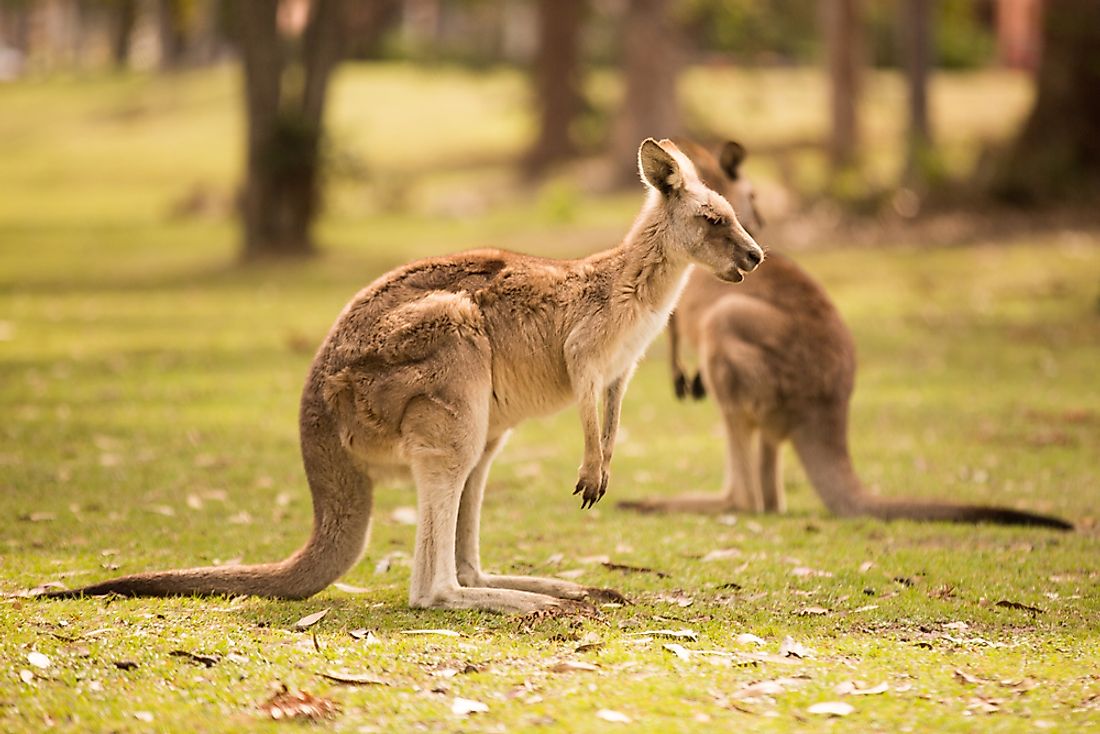
Perhaps the most iconic Australian animal, Kangaroos are marsupials that are indigenous to the country. According to the Australian government, there are approximately 34 million kangaroos in the country. The largest species is the red kangaroo which stands over 6 feet tall. Other notable types include antilopine kangaroo, western gray kangaroo, and eastern gray kangaroo. Kangaroos have powerful hind legs with large feet that are adapted to limping. Their tails are long and muscular and are mainly used for balancing. The female species have pouches that are mainly used to carry young ones. Kangaroos are common in most national parks across Australia as well as along the roads in most cities.
14. Kookaburra
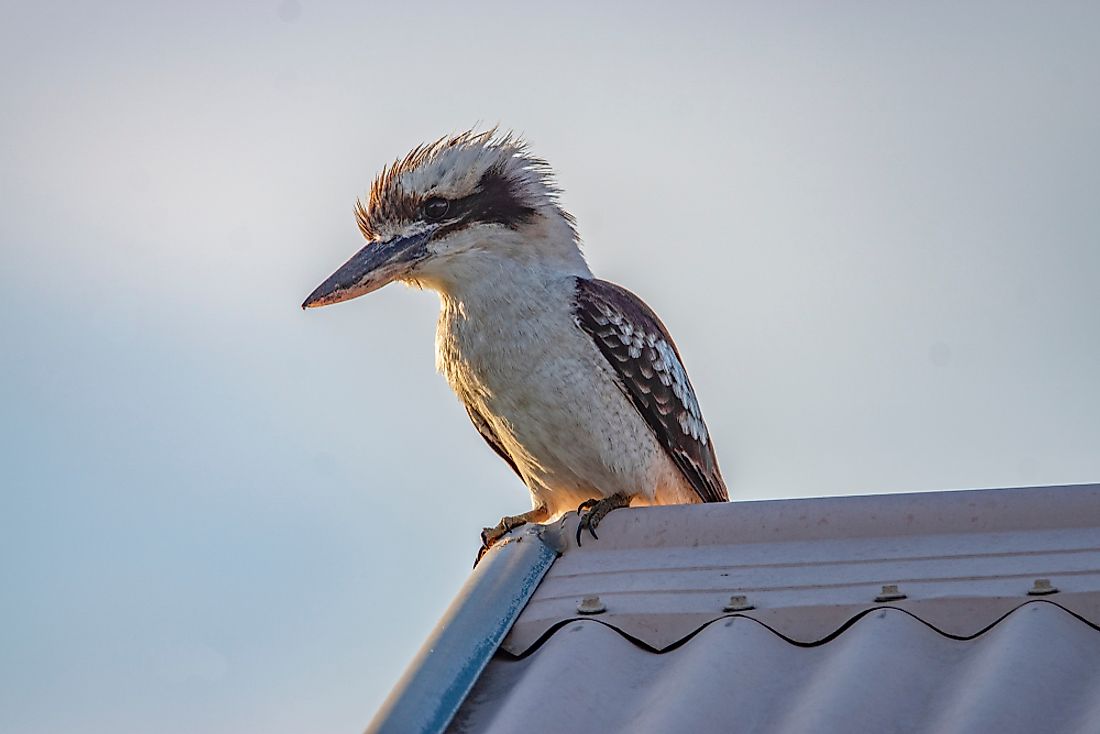
Kookaburra is a terrestrial tree kingfisher native to New Guinea and Australia. Its name originated from the Wiradjuri language in reference to the call it makes. There are four species of kookaburra found in Australia; Rufous-bellied, spangled, blue-winged, and laughing kookaburras (its loud call is commonly used as stock sound effect). These species can grow up to 11-17 inches long and are exclusively carnivores, feeding on snakes, mice, small reptiles, and insects. These birds are territorial and can be found in a wide range of habitat, from arid savannah to humid forest and urban areas with tall trees. Although they are kingfishers, Kookaburras are not closely associated with water.
13. Platypus
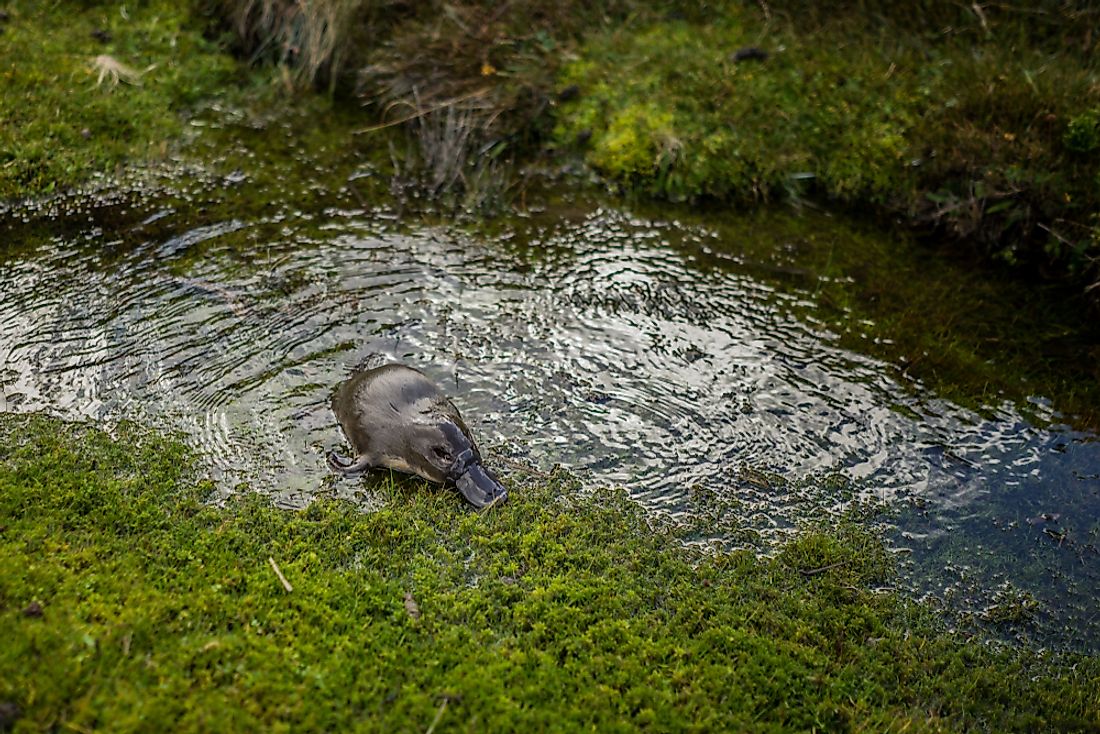
The egg-laying platypus is a semiaquatic mammal endemic to eastern Australia, particularly Tasmania. It is one of the five living species of monotremes. Like other monotremes, platypus use electrosensors to locate its prey. It is one of the few examples of venomous mammals as its hind feet have spurs that are used to deliver venom. The platypus has an unusual appearance including a duck-like bill, beaver-tail, and otter-like feet, making it an important study in evolutionary biology. It mainly inhabits small rivers and streams and can survive in captivity for up to 17 years. Its major predators include snakes, owls, and hawks.
12. Bandicoot
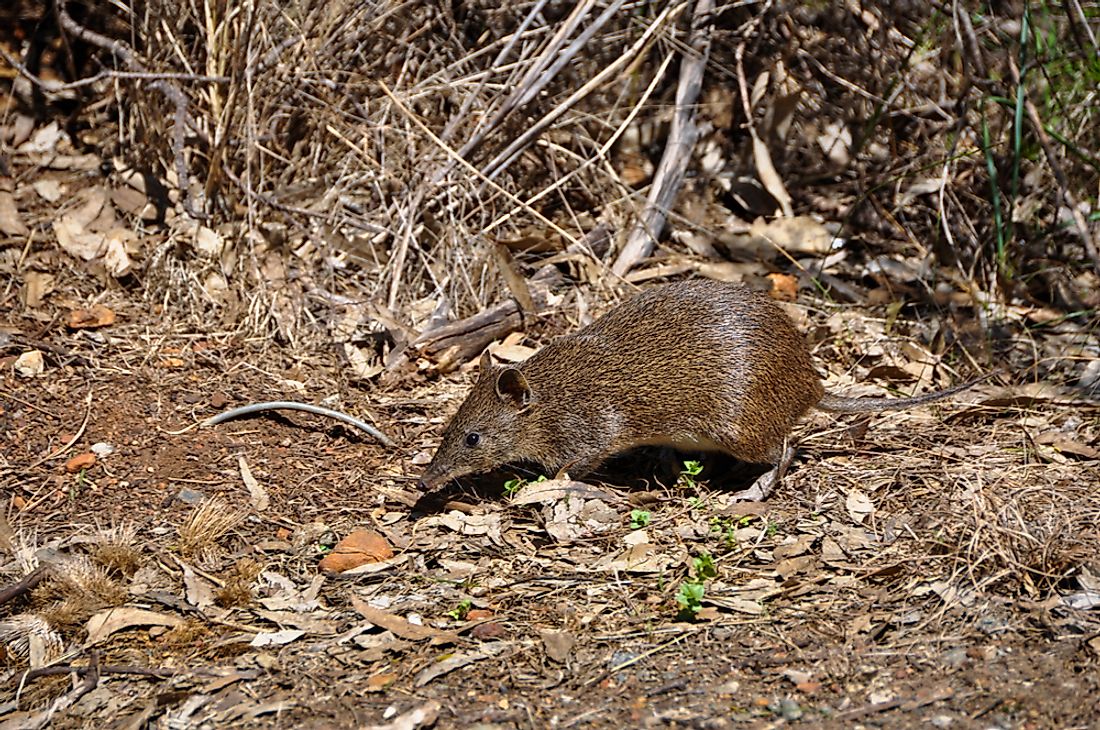
Bandicoots are terrestrial marsupial omnivores endemic to the Australia-New Guinea region. There are about 20 species of bandicoots of different sizes and characteristics. They are a marsupial. The species are on average 12-31 inches long, including a 4-12 inch-long sparsely hairy tail. The body is covered in coarse fur and the hind limbs are longer than the front. It has sharp and slender teeth. Bandicoots are largely nocturnal animals and are considered a pest by most farmers.
11. Emu
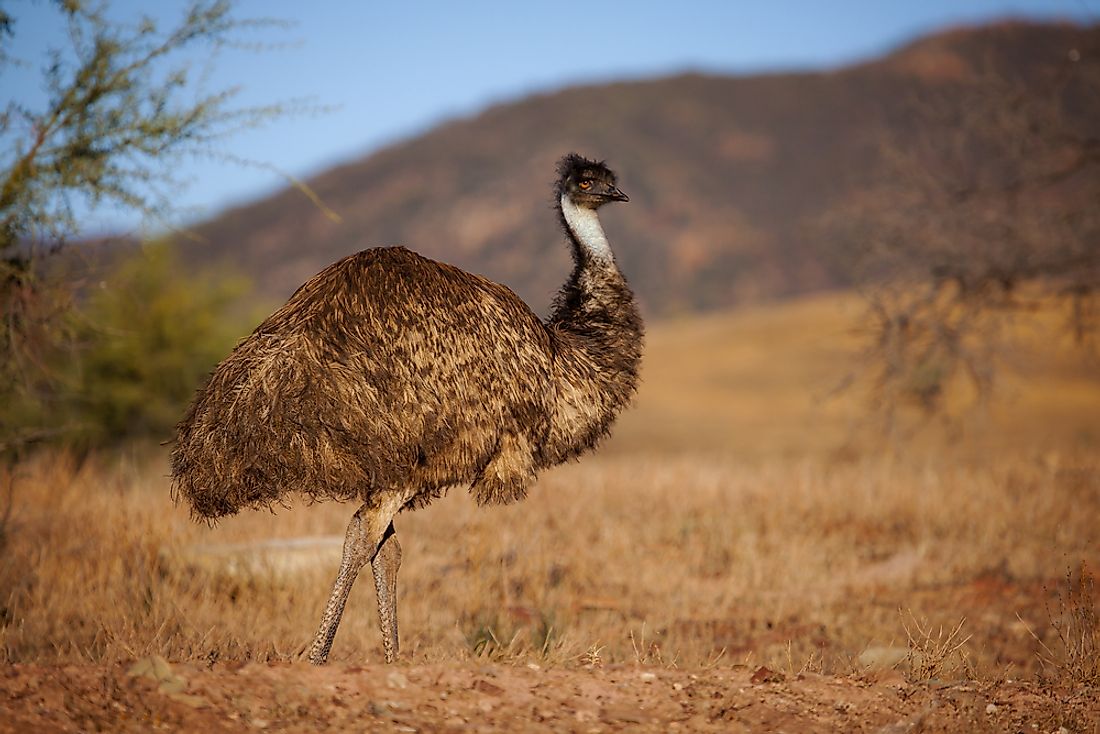
The emu is the second-largest bird by height after the ostrich. It is the largest bird in Australia and the only living member of the genus Dromaius. The bird is mainly found on the mainland but its range also includes Kangaroo Island, Tasmania, and King Island. Emus are covered by soft brown feathers and have long necks and legs. These birds are flightless but can travel a great distance and only sprint when necessary. Their diet consists of a variety of plants and insects but can go for weeks without eating. The female bird can lay several clutches of eggs in a season but it is the male who incubates them.
10. Dingo
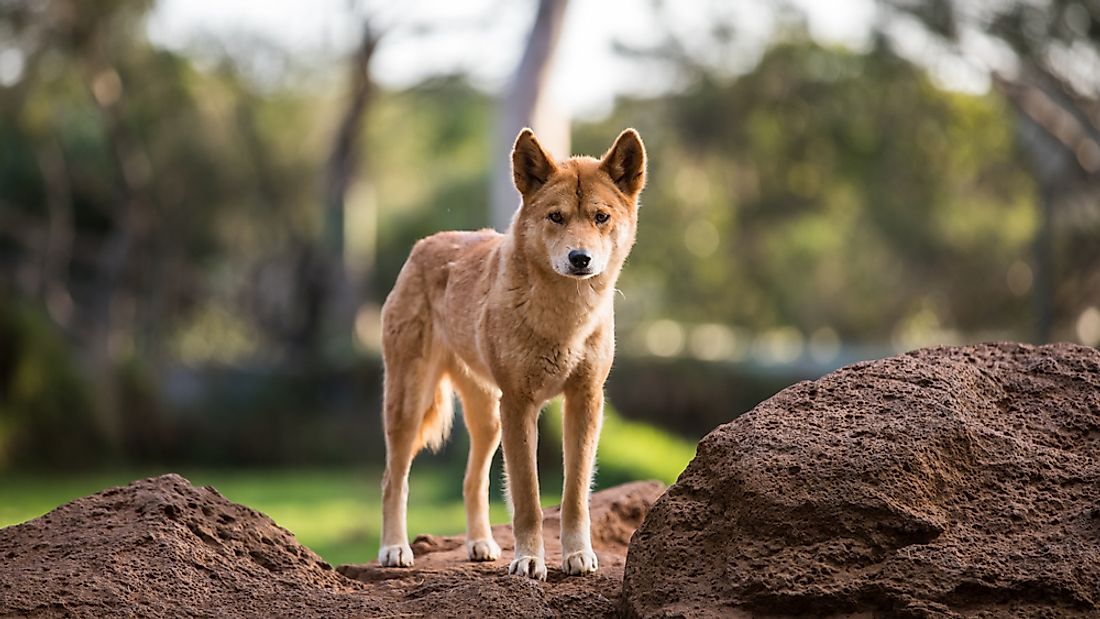
The dingo resembles a wild dog but has a few differentiating body features. The origin of these dog-like animals has been a subject of debate for a while, with some sources indicating that they migrated from central Asia about 18,000 years ago. The dingo has a lean, hardy body with the head as the widest part of the body. It is agile and has highly flexible joints, making it easy to rotate its neck 180 degrees. Dingos can be found in the wild in Australia, especially on Fraser Island.
9. Sugar glider
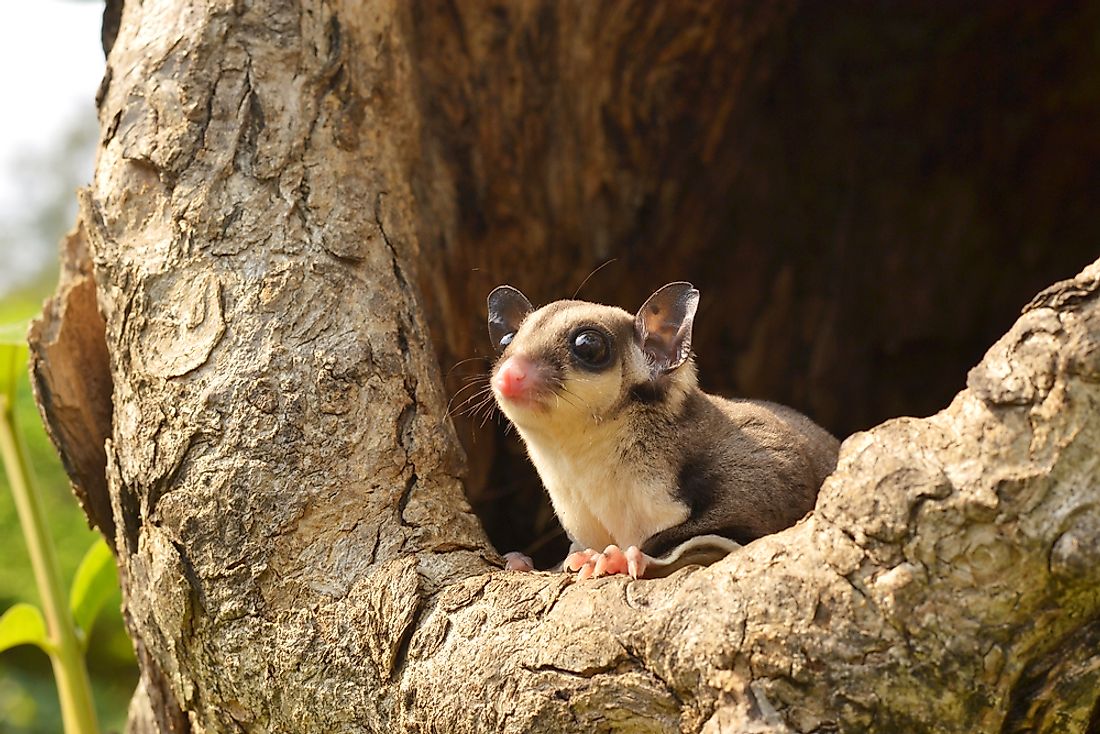
The sugar glider is a species of gliding possum that has striking similarities to the flying squirrel, the most prominent being its ability to glide through the air. The animal has membranes called "potagiums" which extend from the first toe of its hind limbs to the last toe of its forelimbs. The membranes aid the possum in gliding between trees. Commonly found in eucalyptus forests in Eastern Australia, the sugar gliders vary in size and belong to a different group of arboreal marsupials.
8. Echidna
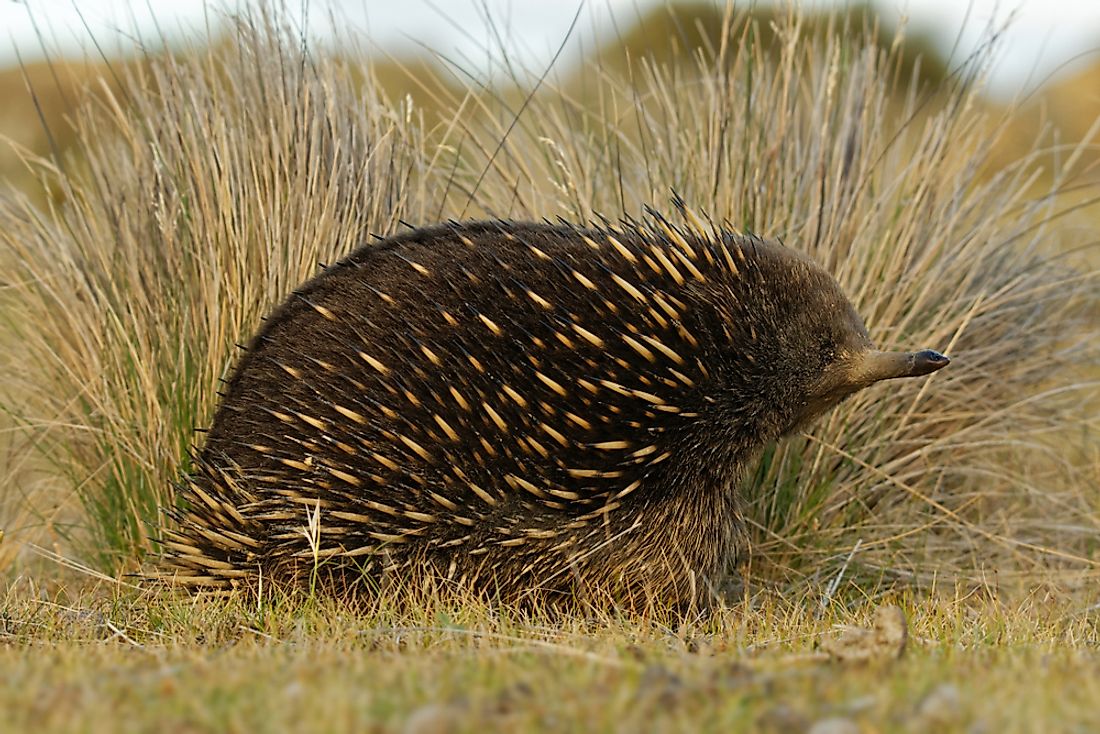
Echidnas are egg-laying monotremes that descended from a platypus-like monotreme over 20 million years ago. The name “Echidna” is derived from a creature in Greek mythology that was half-snake and half-woman as the animal was perceived to have qualities of both reptiles and mammals. Their bodies are covered in coarse hair and spines and are normally brown or black. Echidnas have short, strong limbs with claws used for digging. They have tiny mouths and mainly feed on termites and ants. Echidnas are one of Australia’s most widespread native animals and can live anywhere from deserts to snow-covered mountains.
7. Koala
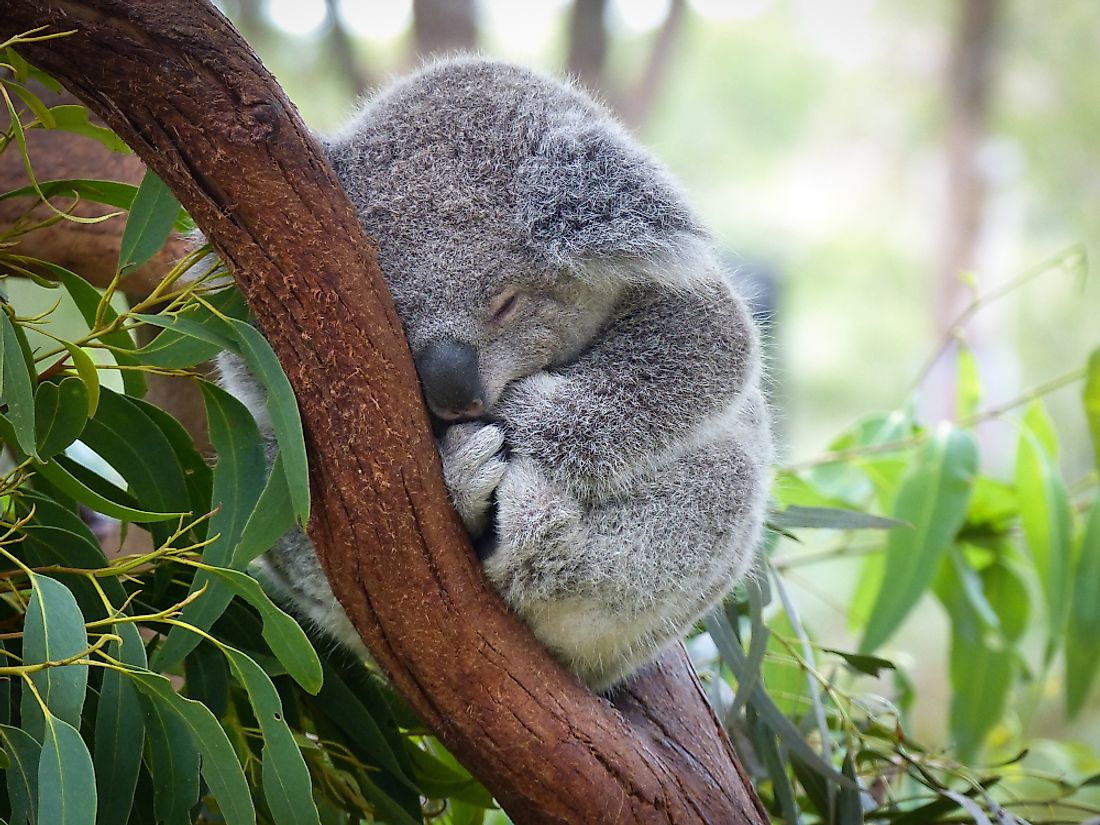
Koalas are arboreal marsupials and the only living member of the family Phascolarctidae. They are found in the coastal areas of mainland Australia’s southern and eastern regions including New South Wales, Southern Australia, Queensland, and Victoria. These species are easily recognizable by their stouts, large head with round fluffy ears and spoon-shaped nose. Their bodies are approxiately 24-33 inches long and weigh about 9-33 pounds. Their fur range from chocolate brown to silver gray. Koalas are mainly herbivores with their diet consisting mainly of eucalyptus leaves. They spend most of their day sleeping to preserve body energy.
6. Tasmanian Devil
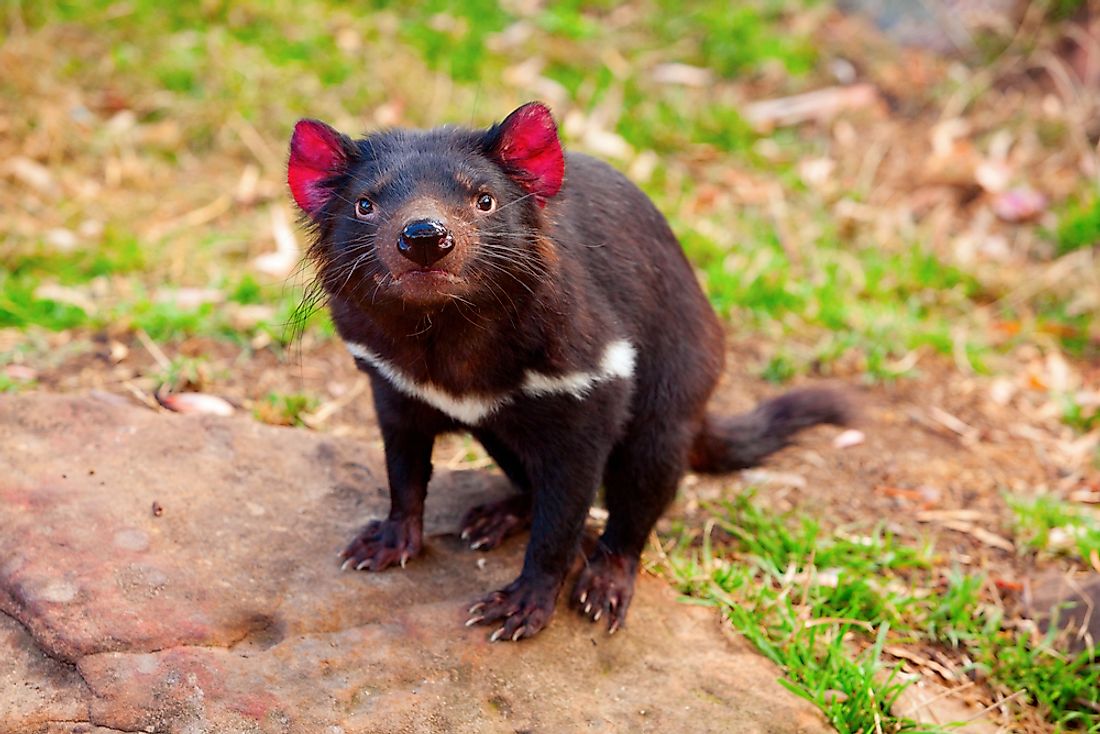
When early European settlers came to Tasmania, they came across a frightening creature with a loud-pierced growl and high-peached screams. The animal had red ears and wide jaws lined with sharp teeth that could only be compared to the devil. The settlers decided to call the animal “Tasmanian devil.” The animal resembles both a small dog and a bear and has a coarse dark fur. Tasmanian devil is the largest surviving carnivorous marsupial and mainly feed on small animals such as wombats and wallabies. The creatures can be found in wildlife parks and Tasmanian Devil Unzoo.
5. Wallaby
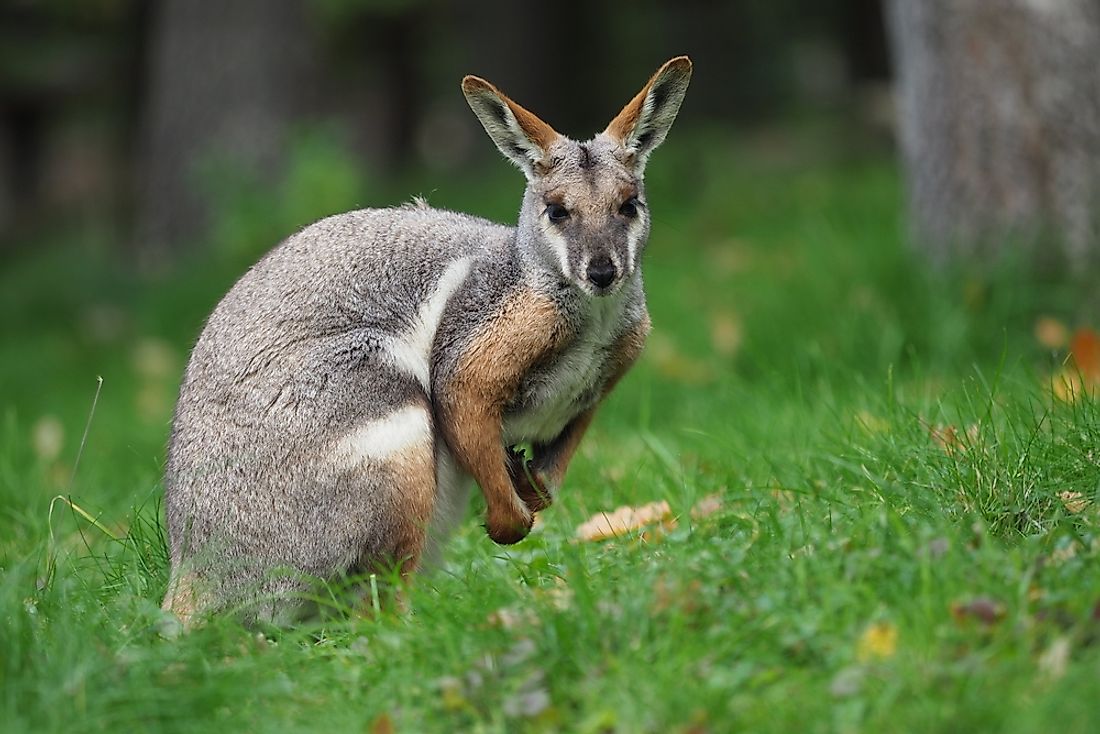
Wallabies closely resemble kangaroos but are much smaller. However, the two belong to the same taxonomic family. The term wallaby is used to refer to any macropod smaller than a kangaroo. There are 30 known species of wallabies including the red-necked wallaby and agile wallaby. These animals can grow to a length of 18-41 inches. The tail is approximately long, reaching a length of 30 inches. Wallabies are grouped by habitat, with some species living in the bush while others preferring rocky areas. They mainly feed on plants and grass.
4. Thorny devil
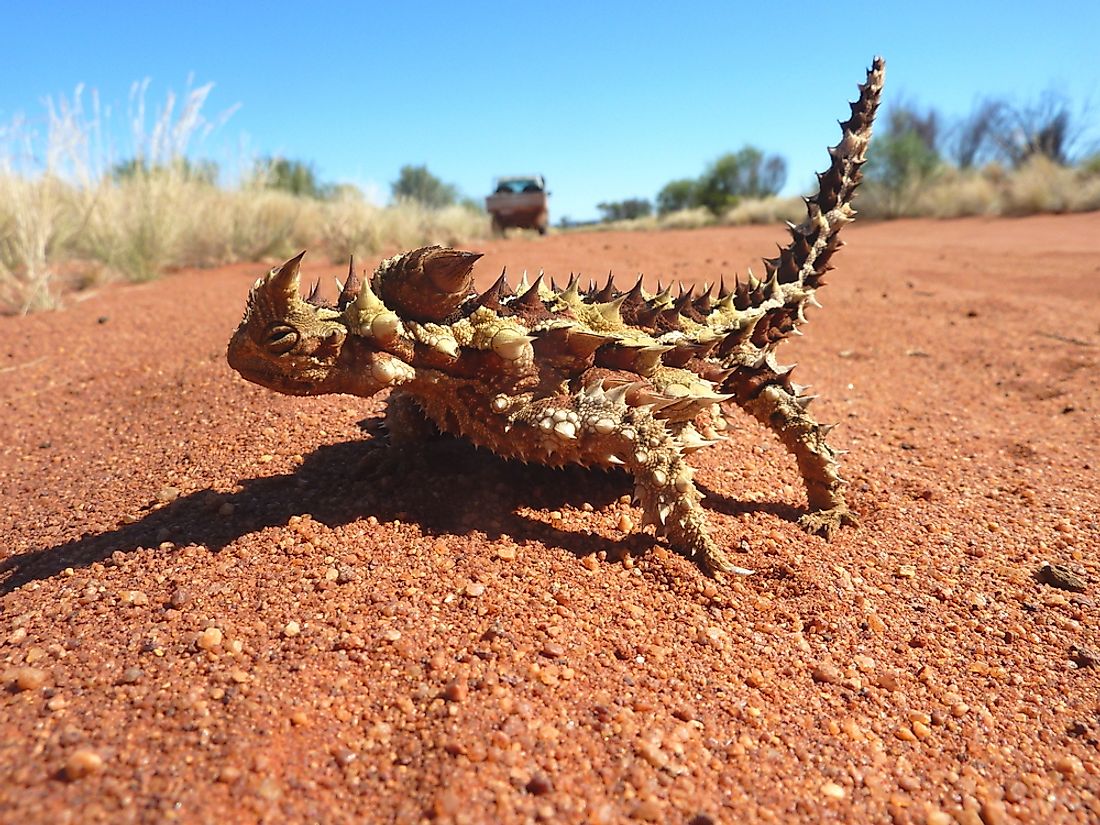
The thorny dragon, also known as the thorny devil is the only species of devil lizard in Australia. The species can grow up to 8.3 inches in length from the head to the tip of the tail. The males are slightly smaller than the female. Their bodies are colored in camouflaging shades of tan and desert brown. However, the colors may change from pale to darker colors during warm weather. The body is covered entirely with uncalcified conical spines. In Australia, thorny dragons are found in deserts and scrublands that cover most of the central parts of the country.
3. Cassowary
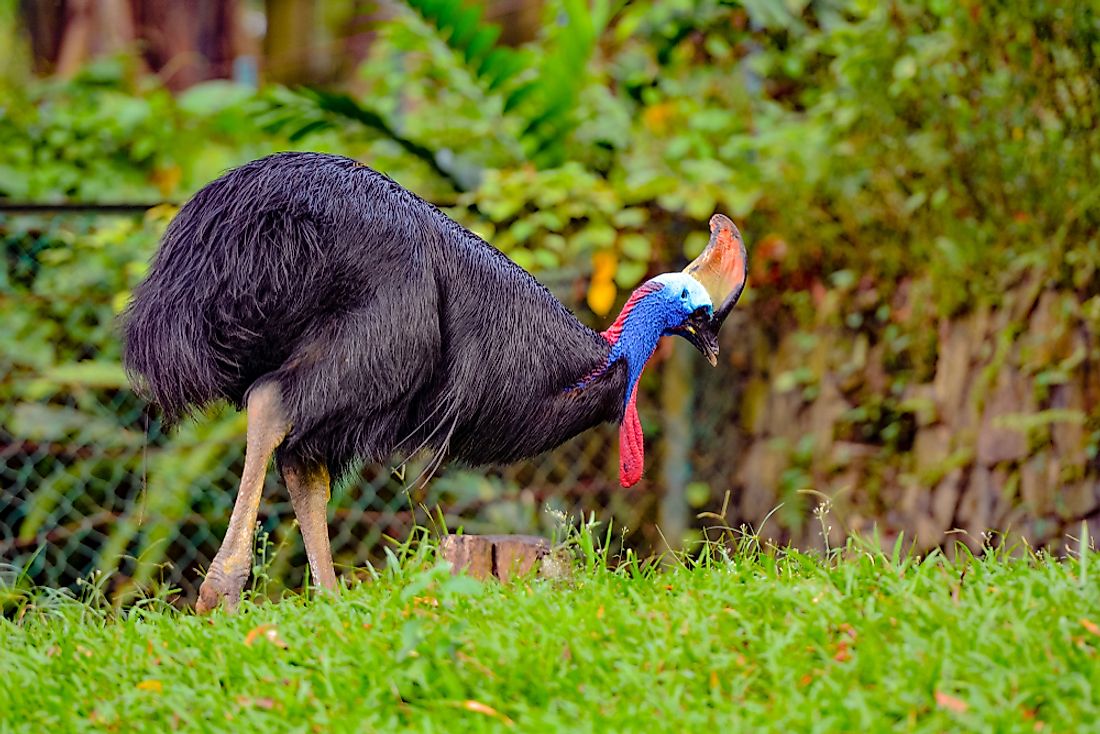
The cassowary is a flightless bird (ratite) native to the tropical forests of northeastern Australia, New Guinea, and some parts of Indonesia. There are three living species but only the Southern cassowary is found in Australia. The other species are Dwarf cassowary and the Northern cassowary. The southern cassowary is the third tallest bird (only ostrich and emu are taller) and the 2nd heaviest living bird in the world. Physically, the female is larger and brighter than the male and can reach a height of about 6.6 feet and a weight of 130 pounds. Cassowary’s diet consists of mainly fruits while some can feed on small invertebrates.
2. Wombat
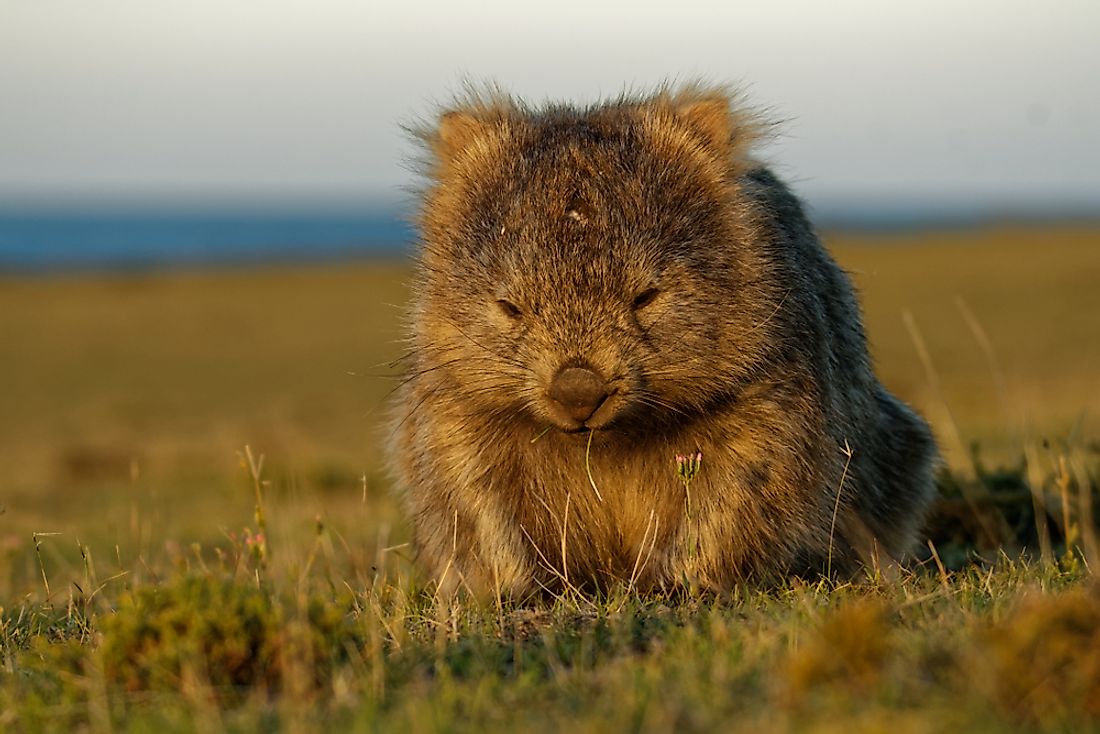
Wombats are stout, muscular marsupials native to Australia. They can grow to about 40 inches long and weigh up to 77 pounds. They have a stubby tail and short legs. Wombats also possess pouches where they nature their young ones. However, the pouch faces backward towards the ears to prevent soil from entering into it as the animal burrows. There are three living species of wombat, all of which are found in Australia. Their range includes mountainous, forested, and heathlands of southeastern Asia.
1. Quokka
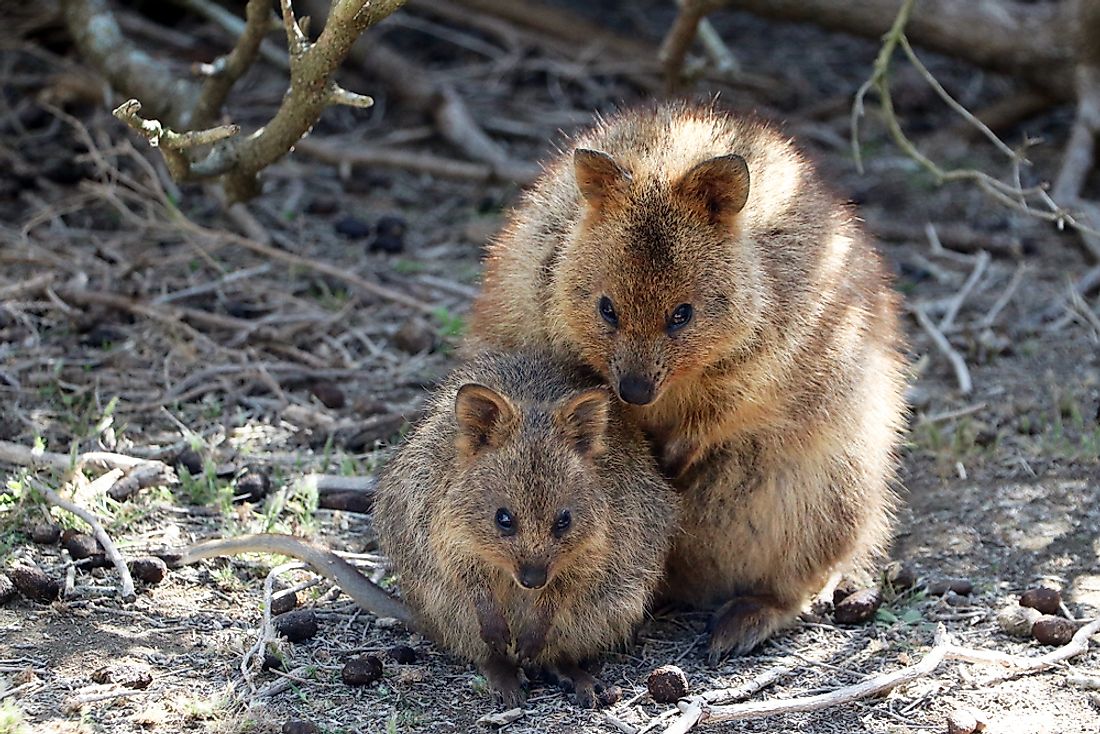
The quokka is a small macropod almost the size of a domestic cat. The animal is mainly found in the smaller islands off the coast of Western Australia, especially Rottnest Island where their population is approximately 8,000-12,000. Quokkas weigh 5.5-11 pounds and are 16-21 inches long with a 9.8-11.8 inch tail. The hind legs are stocky and well-developed, the ears are round, and the head is short and broad. Like most macropods, quokkas are herbivores, feeding on any type of vegetation, including leaves and grass.







